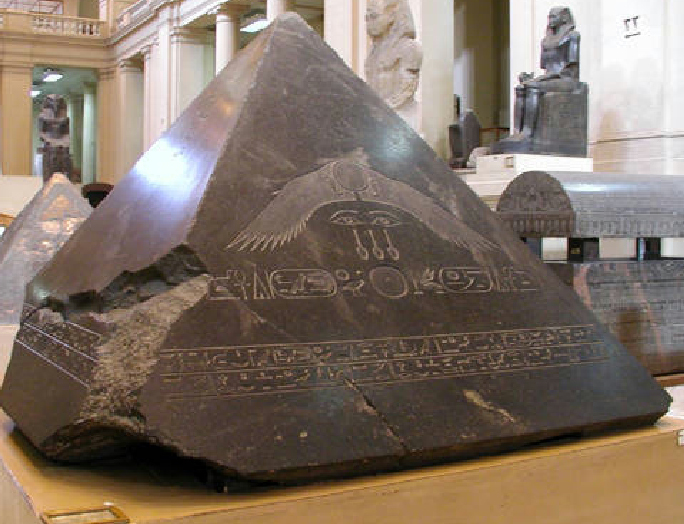Non-Sequiturs
Know what you feel, feel what
you know
When, by transcendent fluke,
You’re introduced
To It,
Some aspect of the real
That doesn’t show.
Life is eternal; a nuclear
Idea that has become a bit
Cliché, knotty
In its fuzzy glow.
Say what you know, know what
you say.
Do I accept that? Is it
true?
Are there exceptions?
More cliché?
False reasoning, naiveté.
I have a feeling life’s a
sphinx,
A silent force, a phoenix:
paradox.
Impossible to box.
I am alive. I know I am.
I know and feel. Can say,
“I am.”
Life always is. Does
that mean me,
My person, personality?
Or does it mean the living
quark’s not me,
But flea whose host’s the
galaxy?
Know, feel, say, always:
Earth may go out in a blaze.
Truth, life, force, ever:
Concepts that you cannot
sever.
Life is nothing if not clever,
Since there’s nothing that is
never.

Benben Stone
Per-Aat (“Great House“), or Per-Atum (“House of Atum“), also known as the “Mansion of the Benben“ (“Mansion of the Phoenix“) was the most important temple in Lunu ("Pillar") [better known as "On" or "Heliopolis"], the seat of the sun god Atum-Ra. In its center was an open courtyard with an obelisk topped by the pyramidal Bnbn Stone, the stone of creation, the solidified seed of Atum, the masturbating bisexual god who created himself. Bnbn was the mound that arose from the primordial waters Nu upon which the creator god Atum settled. It was on this stone that the benu bird (the phoenix) returned every 12,594 years from the Isle of Fire, where the gods were born, to place a new egg to begin a new era. The priests of Lunu were responsible for the calendars and therefore the “keepers of time; the high priest's title was “chief of observers” or “greatest of seers.“ Platon claimed that the priests of Egypt had observed the stars for more than 10,000 years; according to Herodotus, the priests of Lunu were the first to discover the solar year. The city was largely destroyed in the Person invasion of 535 BCE; now part of Cairo, the obelisk is all that remains.
ReplyDelete